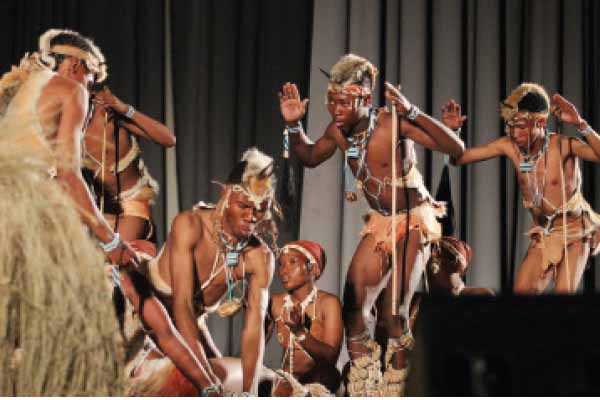Hendricks’ Nxanxase reclaims tsutsube crown with stunning display
The 2018 instalment of the Traditional Song and dance competition under the annual President’s Day Celebration took place this past Sunday. The event, one of the most popular categories in the annual extravaganza once again lived up to expectations and delivered a spectacular line-up of some of the most dazzling showstoppers. Groups from all corners of the country came prepared and ready for a battle.
For those who have been following the competition over the years, they would know that a win is not easily handed on a silver platter, and all groups that make it to the final lap are worthy of the title of the overall winner. Traditional song and dance consist of ten categories - Diware, Seperu (Chobe) and (North West), Hosana, Sebirwa, Tsutsube, Setapa, Phathisi, Dikhwaere, as well as Polka. Each category consists of four groups and in total there are 40 finalist groups. Ask returning groups such as Nxanxase, and they will relate a story about how they have fought tooth and nail to reclaim victory at the competition. The last time that the New Xanagas-based group showed their faces at the finals they were not so lucky.
But this Sunday, their gods were on their side and were indeed smiling. From the minute that the group took to the stage, the crowd stood up and blessed the group with a thunderous applause. It remains to be seen whether this was because they were seeing one of the favourite group leaders, Rebecca Hendricks.
Leading her troops, Hendricks wanted to reclaim the crown that is elusive in the Tsutsube category. She was facing groups that include the defending champions Kgabosereto from Thamaga, Diwetse and Ditsuatsue. Many thought that the defending champs had rightfully defended their title, but this was not the case. Ready for war and coming with everything that they had, Hendricks had done her homework very well and knew that they wanted to return home as champions. By the time that they left the stage, the SSKB stage was about to crack under the pressure.
Backstage, some of her dancers were panting for breath. Even Hendricks herself had to take several minutes to regain her breath. It was clear at that precise moment that this was no ordinary performance. Some of the female dancers appeared to be in a trance and were being ushered out by their male peers.
Gasping for breath, she told this publication that this was indeed a long and tough battle. She explained that they had to go back to the drawing board and see where they had been going wrong. For the finals, she explained that it took them three long and tiring weeks to prepare and polish this performance that secured them the much-deserved win.
“We listened to the judges and what they had previously raised, and we did exactly what they wanted,” she said. She said that the 25-member group had been working around the clock to regain the title. “It was not easy,” she said. Another highlight of the competition was in the Sebirwa category. Newcomers, Mafitlhakgosi under the leadership of Joseph Ikopeng made a grand entrance in the competition. They were facing groups that include Tsa Mmala Cultural Group, Ba Ga Mmanaana, and Mothoping Cultural group. The Old Naledi group clinched victory, setting the stage on fire with their outstanding dance moves.
And lastly, Shigyakao under the Seperu (North West region) from Gumare were once again a sight to behold. The group was facing strong competition from groups that include Tiwazani, Diyathoteng, and Mavuashire. And they came ready for war. The group defended their title and set a high pace for the judges in this category. Other reigning champions who successfully defended their titles include Mwathiyacthicho (Diware), Chankonchanko (Seperu-Chobe), and Kalahari Dancers (Polka). Other winners on the night included DikgositsaNgwao (Hosana), Morogowangwana (Setapa), Mahusane (Dikhwaere) and Kalatsakgale (Phatisi).






